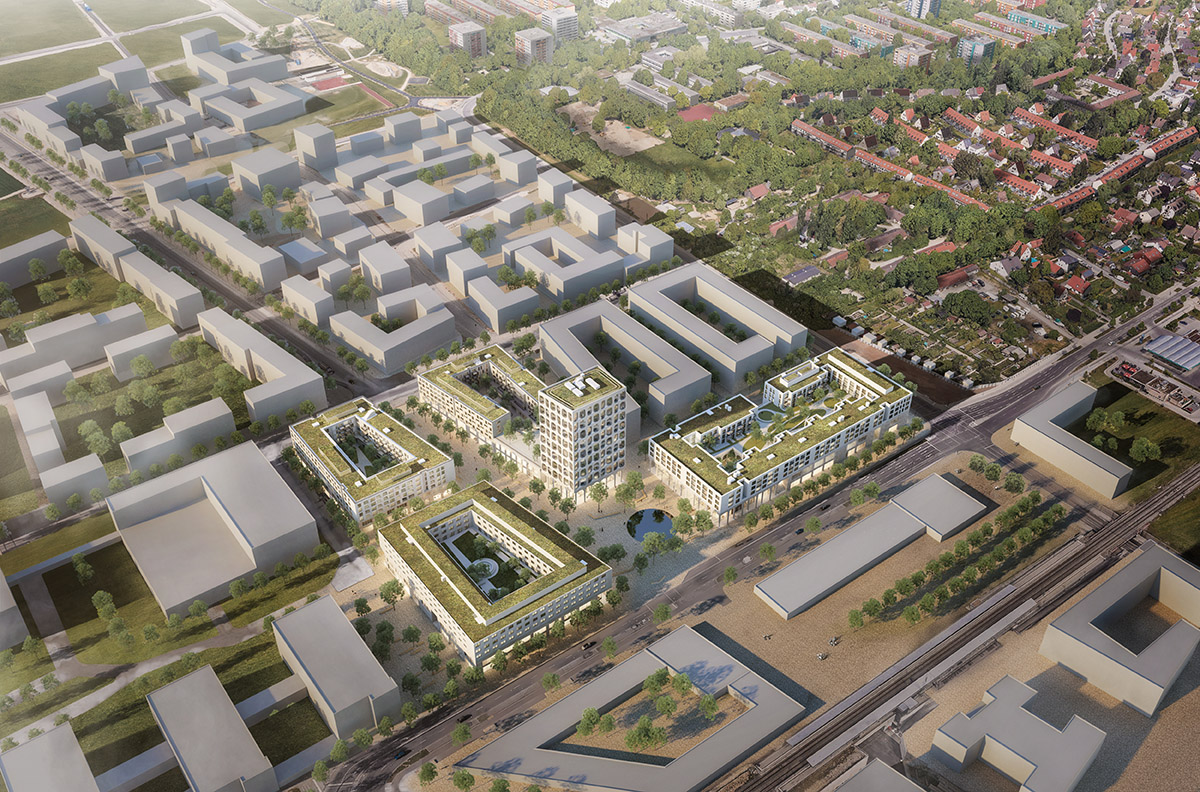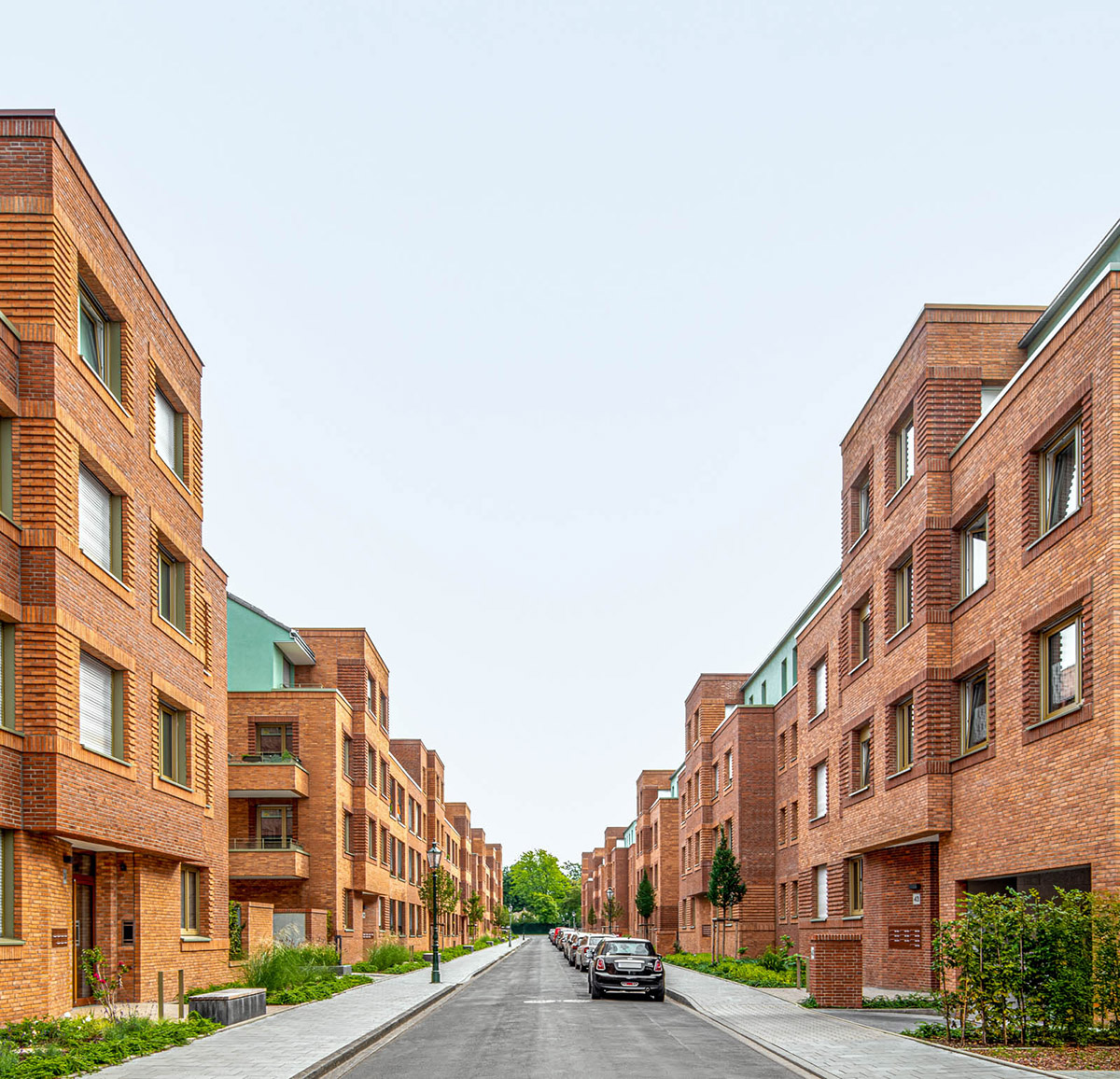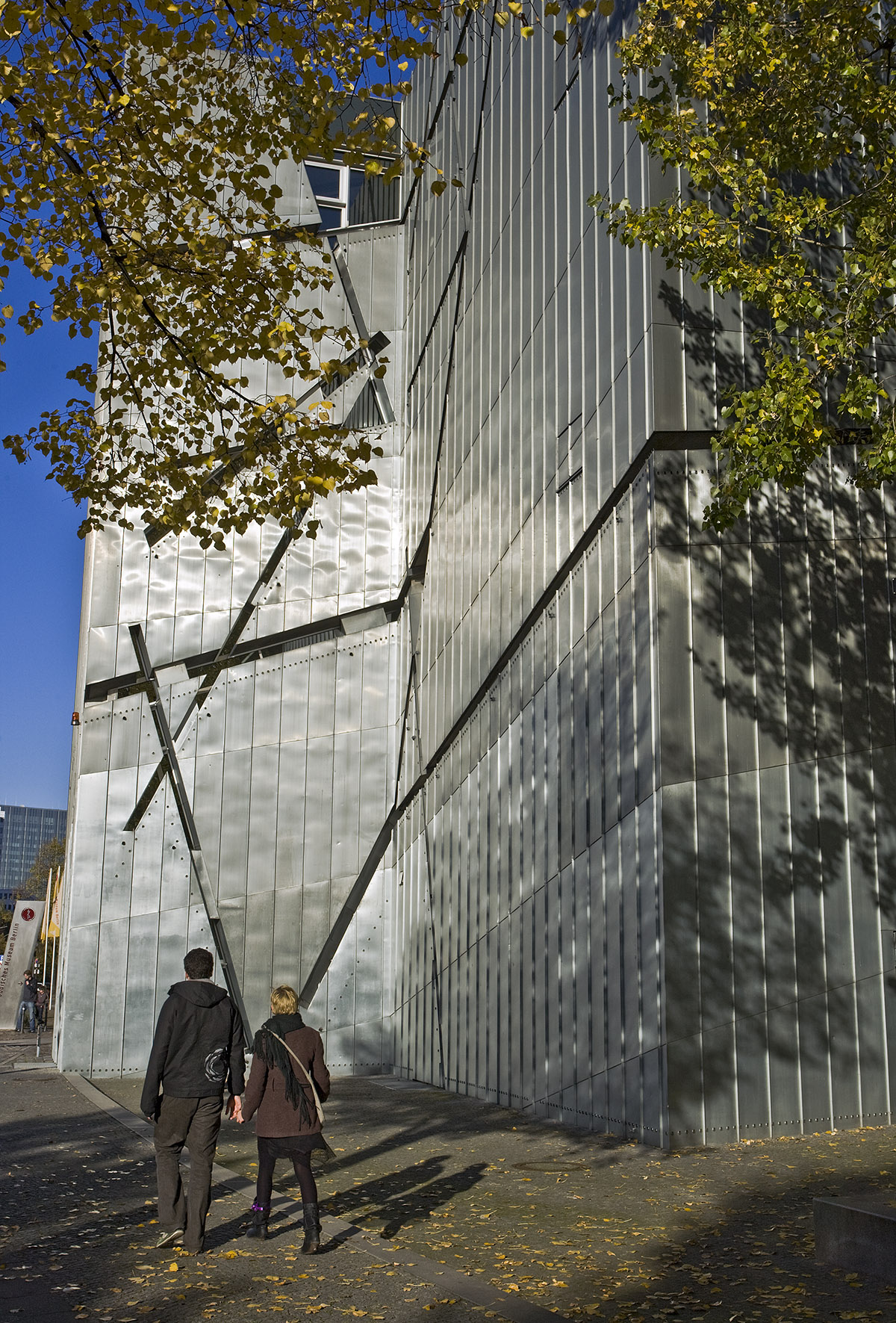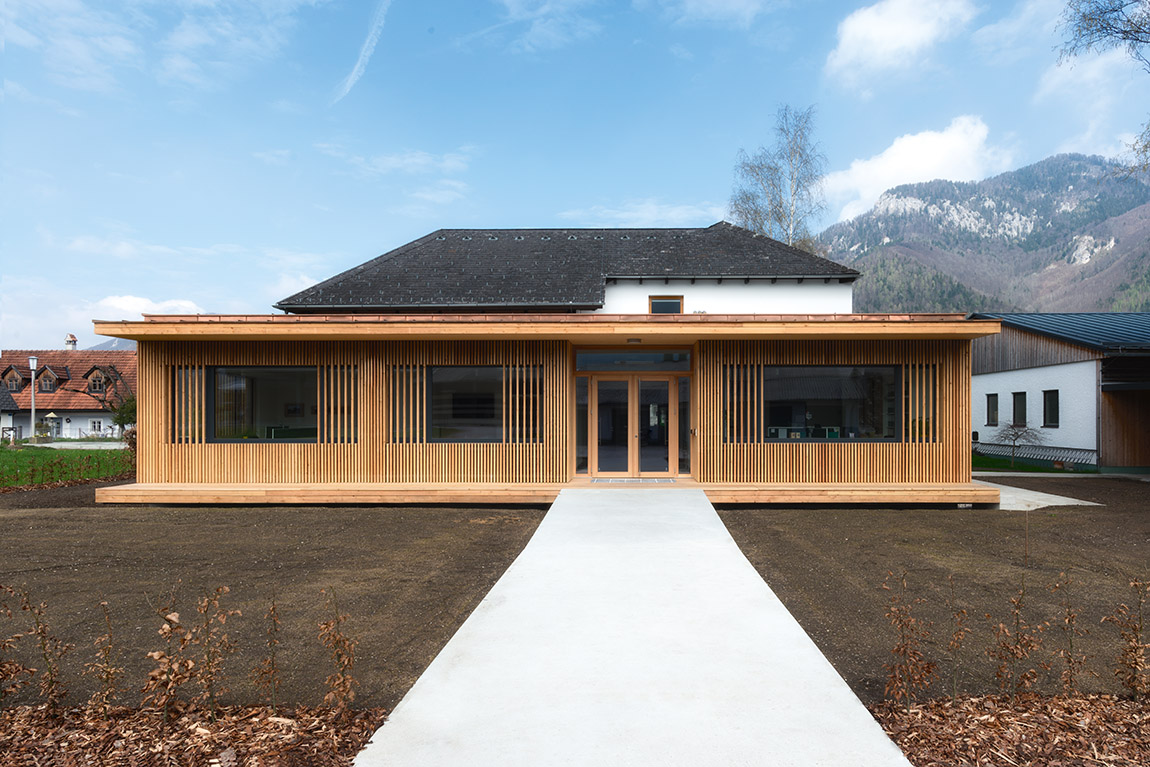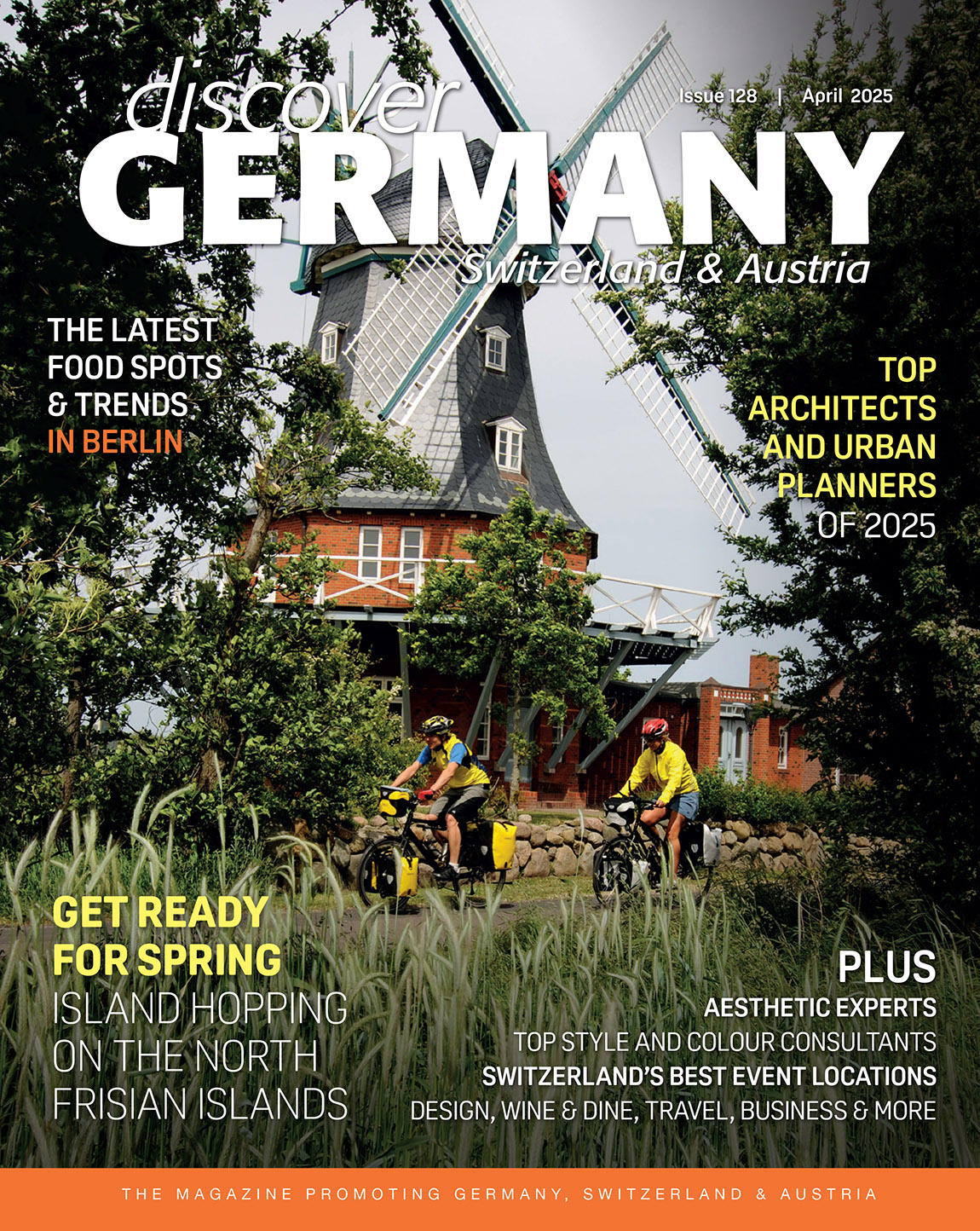Bern City Architecture Guide: Top 5 Architectural Structures
TEXT: CORNELIA BRELOWSKI

Bern, Zentrum Paul Klee. Photo by Ricardo Gomez Angel on Unsplash
In Bern, it all starts with arriving at the Old Town, a listed UNESCO treasure we will get to in a Swiss minute. The train station itself offers the first interesting architectural sight with its curved, translucent modern canopy. It sets the tone for a city literally bridging the old and the new.
Only ten minutes from the station by public transportation, you will find one of the most irresistible contemporary architectural treasures of Bern:
Bern City Architecture Guide – Zentrum Paul Klee
“Art does not reproduce what we see. It makes us see. Art does not reproduce the visible, it makes visible.” This famous quote by Paul Klee (1879–1940) may also apply to the architecture of the Paul Klee center, created by Renzo Piano. Set in a beautiful area near the Schlosshaldenfriedhof cemetery, where Klee was buried, the center honours and houses the worldwide largest collection of his works.
Opened in 2005, the Zentrum Paul Klee is entirely dedicated to the person, life and work of the influential Bauhaus master. The ‘hilly’ outline of the center itself reminds of the artist’s own affinity for nature themes: “For the artist, communication with nature remains the most essential condition. The artist is human, himself nature, part of nature within natural space.” Consequently, the structure embraces the entire location, thus becoming more than a building. The wave-like architectural masterpiece houses the extensive collection of the Paul Klee Foundation, as well as seminar and banquet rooms, a gourmet restaurant, a cafeteria, the Creaviva children’s museum and a shop. Klee’s works are shown in a rotating selection of 120 to 150 works with changing themes. Following John Dewey’s ‘Learning by Doing’ principle of art as experience, the children’s museum Creaviva meanwhile is home to lived creativity. Through the expression of one’s own ideas, the techniques and themes of the great masters are rethought and thus newly discovered.
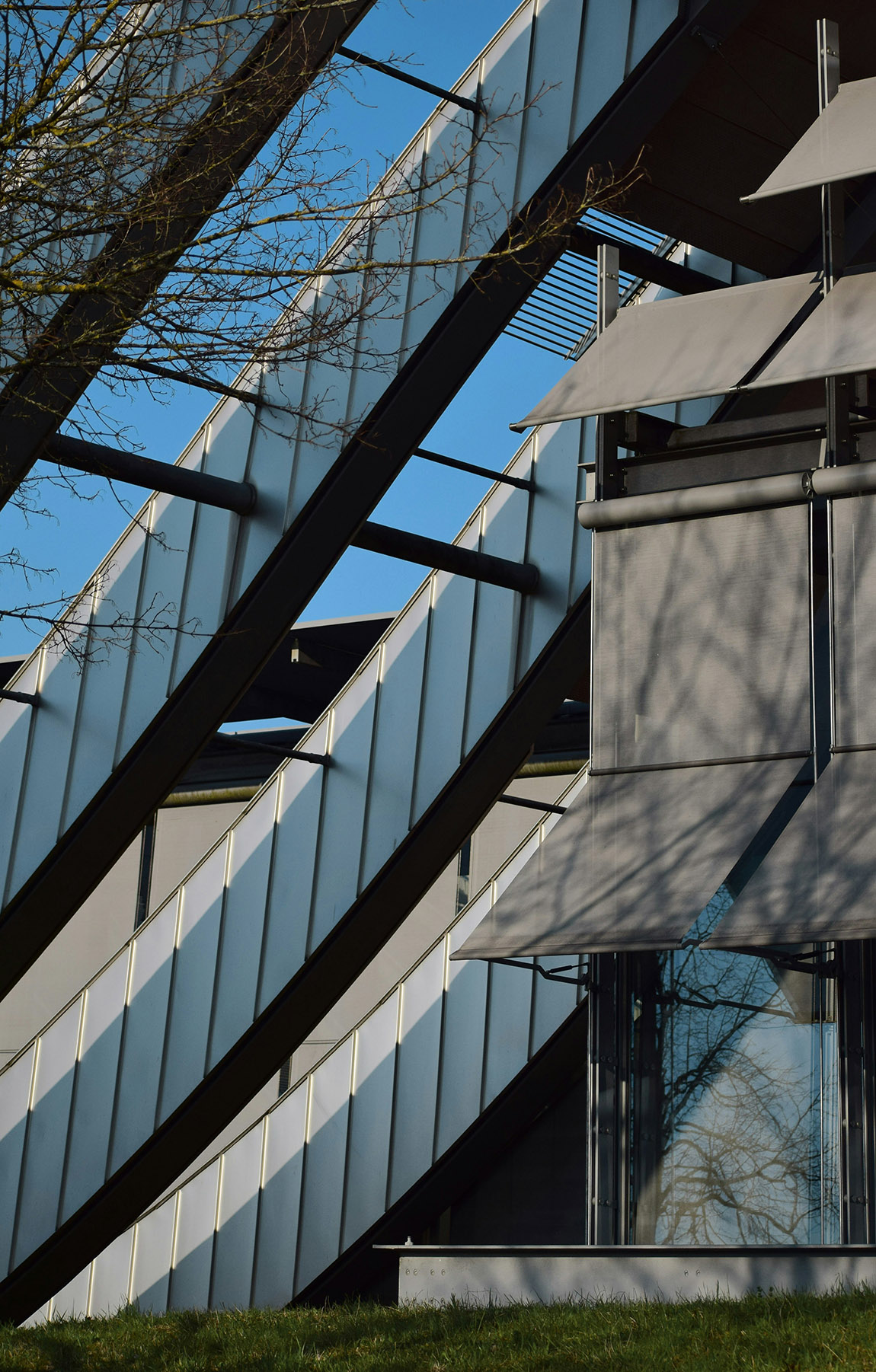
Bern, Zentrum Paul Klee. Photo by Lisa Therese on Unsplash
Bern City Architecture Guide – UNESCO-listed Old Town
A jump from modern art to the medieval ages is not as hard as you think – at least, the city of Bern makes it easy for you: The heart of the city features six km long arcades, which allow you to walk from the main station all the way to, say, the Nydeggbrücke bridge crossing the Aare river, protected from the weather all along. No matter if visitors or locals – Bern’s UNESCO-listed Old City captivates anyone who walks its arcades and alleys.

Bern, Old Town, detail. Photo by Lawrence Chismorie on Unsplash
The city of Bern was founded in the year 1191 by Berchtold V. Duke of Zähringen, on a peninsula in the bend of the Aare River. From 1200 on, the city was then expanded step by step. However, a fire destroyed 650 wooden houses and took the lives of over 100 citizens in 1405. Due to fire safety and protection regulations, it was ordered, much like in other European cities at the time, that all new houses were henceforth to be made of stone. Ever since, sandstone has been dominating the cityscape of Bern. The famous arcades were built after the fire, for the handymen and craftsmen who were working on the houses. Today, the arcades protect both residents and visitors from sun and rain and it is hard to imagine the city without them.

Bern, Old Town. Photo by Patrick Robert Doyle on Unsplash
Bern City Architecture Guide – The Münster (Cathedral)
The Bernese Minster has the highest church spire in all of Switzerland and forms one of the most important landmarks of the capital. Finished in 1571, it also represents the last major work of late Gothic architecture in Europe, an architectural style which included the strict requirement of letting in as much light as possible.
Erected entirely by volunteers and begun in 1421, Bern’s Cathedral took 150 years to complete, and was initially built for the purpose of housing a bishop. However, Protestantism reached Bern before the bishop did and the interior therefore attests to the city’s conversion from Catholicism to Protestantism: While the choir’s religious symbols are strongly Catholic, coats of arms on the ceiling’s keystones mirror Protestant tastes. Empty statuary niches reveal religious artworks that were removed and destroyed during the transition.
Black ceiling flourishes were added after the Gothic style had gone out of fashion while the massive, free-standing granite altar stems from Lausanne Cathedral. Concerning the 15th-century Last Judgment sculpture over the main portal, protestant church leaders decided to leave the carving intact because of its justice theme: 234 human figures from high and low ranks and religious leaders, including the pope and lay people, are represented in the medieval treasure. Some of each group head to heaven, and some to hell. Visitors climb the 344 steps to reach the viewing deck from which the wonderful panorama from the Old City to the peaks of the Bernese Oberland is a must-see.
The picturesque bell tower was completed in 1893. Initially only 50 m high, the now 100 m high spire forms the most recognizable landmark of the Old Town skyline.
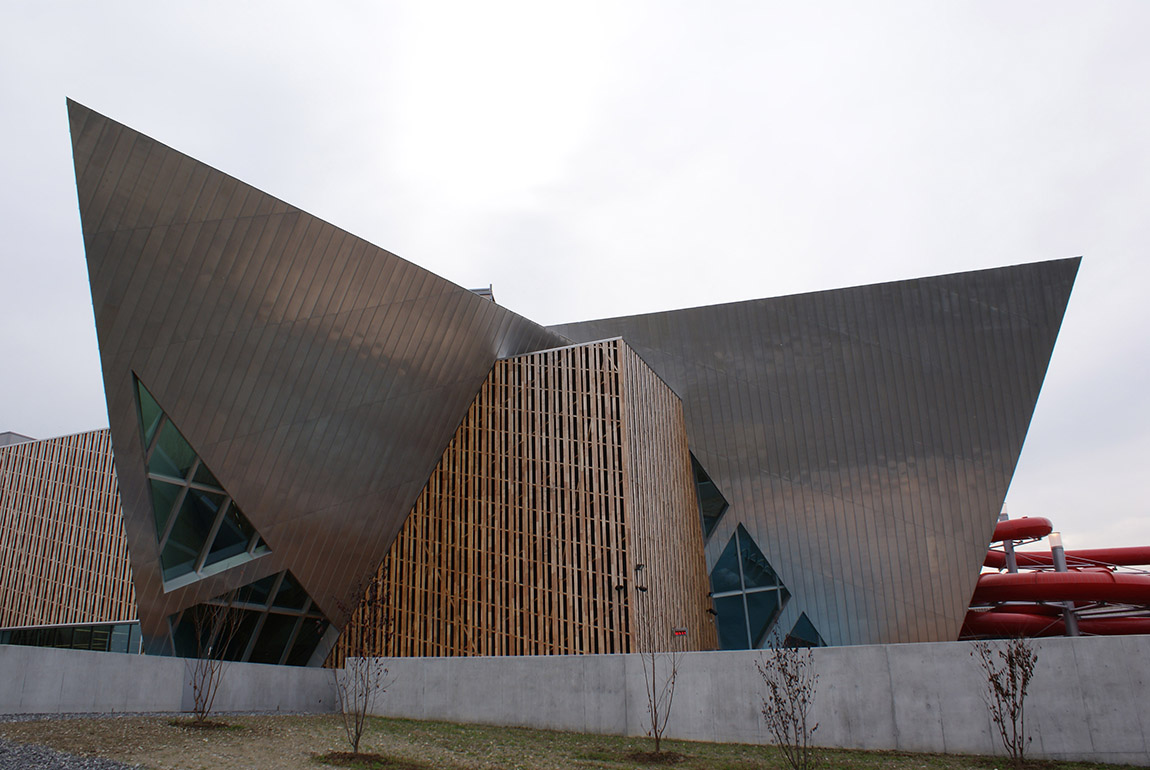
Bern, Westside Shopping and Leisure Center. Photo: Wikimedia, public domain
Bern City Architecture Guide – The Westside Center
As the diversity of Bern’s architecture dictates, we move back to contemporary architecture, this time in a highly unlikely environment. However, anyone interested in architecture should pay a visit to the Westside Shopping and Leisure center, designed by Daniel Libeskind. The star architect’s vision was to create an urban marketplace scenario and the mixed-use concept redefines the terms of shopping, entertainment and living. Clad in robinia wood, the complex visually connects with the landscape opening to the west.
Hailed as the “new city gate to Bern”, Westside houses 54 stores, 13 restaurants, 11 theatres, a Holiday Inn and a premium wellness and swimming park. Located above the A1 highway and on the regional train line and public transport network, the Westside center is a meeting point for the entire area of Greater Bern, forming indeed a structurally striking gateway to the city.
Bern City Architecture Guide – Titan/Kubus
For fans of cubes, Bern’s Historical Museum has a most imaginative modern expansion on offer. With parts of it practically “implanted” in the old building, two tower-like additions and a new intermediate building, it solves the requirements of museum operations at the heart of the existing structure. Since the extension’s opening in 2009, the museum finally has enough space to properly store and attractively display its collection. The extension plan by prize-winning architectural firm :mlzd includes a 1200 m2 exhibition hall with a walk-in roof terrace, floors allocated to storerooms and office space for the museum, as well as offices and a library with a reading room for the city archives. The exhibition hall itself is sunk into the ground and there is an area on the roof that is accessible from both the park and the entrance hall. To the rear, the office building is sealed off in a fortress-like fashion.
With the top five Bern destinations mentioned above, one of which includes the entire heart of the city, you are only dipping your toe into the manifold architectural treasures that Bern has to offer. When the Old Town was listed as a UNESCO World Heritage Site, the UNESCO committee itself praised the wide span between medieval and modern treasures to be found in the city: “The Old City of Bern is a positive example of a city that has conserved its medieval urban structure whilst responding, over time, to the increasingly complex functions of a capital city of a modern State.”
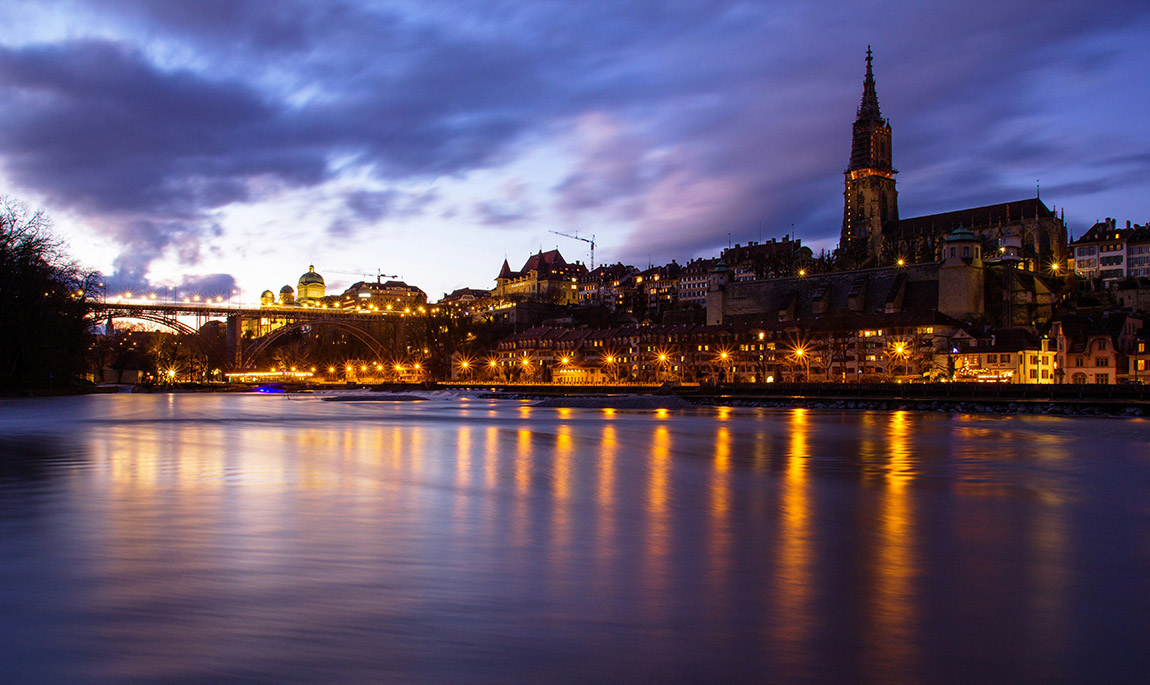
Bern, Old Town by night. Photo by Beat Bossert on Unsplash
Subscribe to Our Newsletter
Receive our monthly newsletter by email
